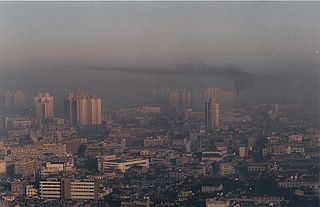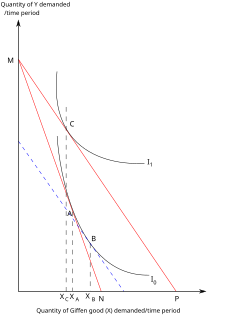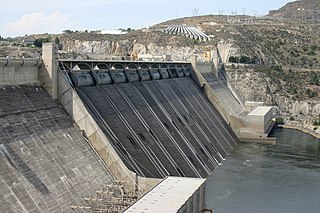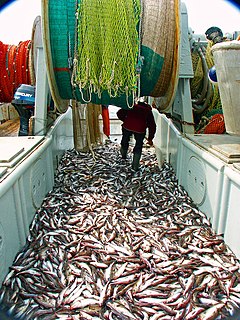 W
WIn economics, goods are items that satisfy human wants and provide utility, for example, to a consumer making a purchase of a satisfying product. A common distinction is made between goods which are transferable, and services, which are not transferable.
 W
WClub goods are a type of good in economics, sometimes classified as a subtype of public goods that are excludable but non-rivalrous, at least until reaching a point where congestion occurs. Often these goods exhibit high excludability, but at the same time low rivalry in consumption. Thus, club goods have essentially zero marginal costs and are generally provided by what is commonly known as natural monopolies. Furthermore, Club goods have artificial scarcity. Club theory is the area of economics that studies these goods. One of the most famous provisions was published by Buchanan in 1965 "An Economic Theory of Clubs," in which he addresses the question of how the size of the group influences the voluntary provision of a public good and more fundamentally provides a theoretical structure of communal or collective ownership-consumption arrangements.
 W
WCommon goods are defined in economics as goods that are rivalrous and non-excludable. Thus, they constitute one of the four main types based on the criteria:whether the consumption of a good by one person precludes its consumption by another person (rivalrousness) whether it is possible to prevent people (consumers) who have not paid for it from having access to it (excludability)
 W
WIn economics, a complementary good is a good whose appeal increases with the popularity of its complement. Technically, it displays a negative cross elasticity of demand and that demand for it increases when the price of another good decreases. If A is a complement to B, an increase in the price of A will result in a negative movement along the demand curve of A and cause the demand curve for B to shift inward; less of each good will be demanded. Conversely, a decrease in the price of A will result in a positive movement along the demand curve of A and cause the demand curve of B to shift outward; more of each good will be demanded. This is in contrast to a substitute good, whose demand decreases when its substitute's price decreases.
 W
WConsumer goods in the Soviet Union were usually produced by a two-category industry. Group A was "heavy industry", which included all goods that serve as an input required for the production of some other, final good. Group B was "consumer goods", final goods used for consumption, which included food, clothing and shoes, housing, and such heavy-industry products as appliances and fuels that are used by individual consumers. From the early days of the Stalin era, Group A received top priority in economic planning and allocation so as to industrialize the Soviet Union from its previous agricultural economy.
 W
WThe term designer label refers to clothing, luxury automobile manufacturers and other personal accessory items sold under an often prestigious marque which is commonly named after a designer, founder, or a location- like where the company was founded. The term is most often applied to luxury goods. While members of the upper middle class, or the mass affluent, are perhaps the most commonly targeted customers of these designer labels, some marquees—such as Cartier, Rolex, Montblanc and the haute couture — tend to a wealthier customer base. But almost every designer brand has merchandise that middle-class wouldn't normally be able to afford such as exotic skins, furs and hides, limited edition pieces, or things simply priced higher. Designer Label companies use their smaller and cheaper merchandise, aimed at the middle class, such as wallets, fashion jewellery, key-rings and small accessories, to make the majority of their income, whilst the more expensive pieces such as haute couture, high jewellery, hand-bags, shoes and even furnishings are usually reserved for the wealthier upper-class clientele.
 W
WIn economics, a durable good or a hard good or consumer durable is a good that does not quickly wear out or, more specifically, one that yields utility over time rather than being completely consumed in one use. Items like bricks could be considered perfectly durable goods because they should theoretically never wear out. Highly durable goods such as refrigerators or cars usually continue to be useful for several years of use, so durable goods are typically characterized by long periods between successive purchases.
 W
WIn economics, a good, service or resource are broadly assigned two fundamental characteristics; a degree of excludability and a degree of rivalry. Excludability is defined as the degree to which a good, service or resource can be limited to only paying customers, or conversely, the degree to which a supplier, producer or other managing body can prevent "free" consumption of a good.
 W
WIn economics and consumer theory, a Giffen good is a product that people consume more of as the price rises and vice versa—violating the basic law of demand in microeconomics. For any other sort of good, as the price of the good rises, the substitution effect makes consumers purchase less of it, and more of substitute goods; for most goods, the income effect reinforces this decline in demand for the good. But a Giffen good is so strongly an inferior good in the minds of consumers that this contrary income effect more than offsets the substitution effect, and the net effect of the good's price rise is to increase demand for it. Also known as Giffen paradox. A Giffen good is considered to be the opposite of an ordinary good.
 W
WGoods are items that are usually tangible, such as pens, books, salt, apples, and hats. Services are activities provided by other people, who include doctors, lawn care workers, dentists, barbers, waiters, or online servers, a book, a digital videogame or a digital movie. Taken together, it is the production, distribution, and consumption of goods and services which underpins all economic activity and trade. According to economic theory, consumption of goods and services is assumed to provide utility (satisfaction) to the consumer or end-user, although businesses also consume goods and services in the course of producing other goods and services.
 W
WIndependent goods are goods that have a zero cross elasticity of demand. Changes in the price of one good will have no effect on the demand for an independent good. Thus independent goods are neither complements nor substitutes.
 W
WIn economics, an inferior good is a good whose demand decreases when consumer income rises, unlike normal goods, for which the opposite is observed. Normal goods are those goods for which the demand rises as consumer income rises.
 W
WIn economics, a luxury good is a good for which demand increases more than proportionally as income rises, so that expenditures on the good become a greater proportion of overall spending.
 W
WMid-luxury is a term applied in the U.S. market to fashion, vehicles, hotels, apartments, and other consumer goods and services, for brands that are not as expensive as luxury goods, but more expensive than mass market brands.
 W
WIn economics, a normal good is a type of a good which experiences an increase in demand due to an increase in income. When there is an increase in a person's income, for example due to a wage rise, a good for which the demand rises due to the wage increase, is referred as a normal good. Conversely, the demand for normal goods declines when the income decreases, for example due to a wage decrease or layoffs.
 W
WA private good is defined in economics as "an item that yields positive benefits to people" that is excludable, i.e. its owners can exercise private property rights, preventing those who have not paid for it from using the good or consuming its benefits; and rivalrous, i.e. consumption by one necessarily prevents that of another. A private good, as an economic resource is scarce, which can cause competition for it. The market demand curve for a private good is a horizontal summation of individual demand curves.
 W
WIn economics, a public good is a good that is both non-excludable and non-rivalrous. For such goods, users cannot be barred from accessing or using them for failing to pay for them. Also, use by one person neither prevents access of other people nor does it reduce availability to others. Therefore, the good can be used simultaneously by more than one person. This is in contrast to a common good such as wild fish stocks in the ocean, which is non-excludable but rivalrous to a certain degree. If too many fish were harvested, the stocks would deplete, limiting the access of fish for others. A public good must be valuable to more than one user, otherwise, the fact that it can be used simultaneously by more than one person would be economically irrelevant.
 W
WRelational goods are non-material goods that can only be produced and consumed within groups, and which are intrinsically linked to relationships and interaction. Popular examples include the enjoyment of a football game in a stadium, where the collective enjoyment of the game adds a relational good in terms of excitement and enjoyment to all in the stadium. This constitutes an experience that cannot be had when watching alone. Other examples include group charity work, friendship or reciprocal love. Relational goods can be necessary for the optimization of an activity like the football game example. On the other hand, like Nussbaum suggest, a relational good may be the relationship in itself, with the good being dependent on the existence of the relationship. Friendships is an example of a relationship in which the value that come from the relationship are tied up in the existence and maintenance of the relationship.
 W
WIn economics, a good is said to be rivalrous or a rival if its consumption by one consumer prevents simultaneous consumption by other consumers, or if consumption by one party reduces the ability of another party to consume it. A good is considered non-rivalrous or non-rival if, for any level of production, the cost of providing it to a marginal (additional) individual is zero. A good is "anti-rivalrous" and "inclusive" if each person benefits more when other people consume it.
 W
WA service is a transaction in which no physical goods are transferred from the seller to the buyer. The benefits of such a service are held to be demonstrated by the buyer's willingness to make the exchange. Public services are those that society as a whole pays for. Using resources, skill, ingenuity, and experience, service providers benefit service consumers. Service is intangible in nature. Services may be defined as acts or performances whereby the service provider provides value to the customer.
 W
WIn economics, a luxury good is a good for which demand increases more than proportionally as income rises, so that expenditures on the good become a greater proportion of overall spending.
 W
WA Veblen good is a type of luxury good for which the demand for a good increases as the price increases, in apparent contradiction of the law of demand, resulting in an upward-sloping demand curve. The higher prices of Veblen goods may make them desirable as a status symbol in the practices of conspicuous consumption and conspicuous leisure. A product may be a Veblen good because it is a positional good, something few others can own.
 W
WYellow goods are material for construction and earth-moving equipment, quarrying equipment, and fork-lift trucks. The term is also used to encompass agricultural equipment, such as tractors.